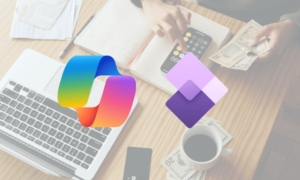In today’s, mobile applications using Flutter have become an integral part of our daily lives, serving as tools for communication, entertainment, productivity, and more. With the increasing demand for high-quality, cross-platform mobile apps, developers are constantly seeking efficient and versatile frameworks to streamline the development process.
One such framework that has gained significant traction in recent years is Flutter, Google’s open-source UI toolkit for building natively compiled applications for mobile, web, and desktop from a single codebase. Flutter’s popularity stems from its ability to empower developers to create beautiful, fast.
And responsive mobile applications using a single programming language, Dart. By leveraging Flutter’s rich set of pre-designed widgets, extensive libraries, and powerful development tools, developers can build feature-rich applications with stunning user interfaces and smooth performance across different platforms.
Why Choose Flutter for Mobile App Development?

- Cross-Platform Development: Flutter enables developers to write code once and deploy it across multiple platforms, including iOS, Android, and even the web. This not only saves time and effort but also ensures consistency and uniformity in the user experience across different devices.
- Hot Reload: One of Flutter’s most beloved features is its hot reload capability, which allows developers to quickly see the effects of code changes in real-time without losing the app’s state. This rapid iteration cycle significantly accelerates the development process and fosters collaboration among team members.
- Rich Set of Widgets: Flutter offers a comprehensive collection of customizable widgets for building complex UI layouts, animations, and interactions. From basic buttons and text inputs to complex animations and gestures, Flutter’s widget catalog provides developers with the building blocks they need to bring their app designs to life.
- High Performance: Flutter’s architecture, which includes a high-performance rendering engine and a reactive framework, enables smooth animations, fluid transitions, and excellent performance, even on older devices. This ensures that Flutter apps deliver a responsive and engaging user experience, regardless of the device’s hardware specifications.
- Community Support: Flutter forums boasts a vibrant and supportive community of developers, designers, and enthusiasts who actively contribute to its growth and success. With an abundance of tutorials, guides, packages, and plugins available, developers can easily find resources and solutions to overcome challenges and enhance their Flutter development skills.
Steps to Building a Mobile Application Using Flutter
- Setup Development Environment: Install Flutter SDK and set up your preferred code editor, such as Visual Studio Code or Android Studio, with the necessary plugins and extensions for Flutter development.
- Create a New Flutter Project: Use the
flutter createcommand to generate a new Flutter project with the desired project structure and configuration. - Design UI Layout: Design the user interface of your mobile application using Flutter’s rich set of widgets and layout components. Leverage Flutter’s declarative UI approach to create responsive and visually appealing layouts that adapt to different screen sizes and orientations.
- Implement Functionality: Implement the desired functionality and features of your mobile application, such as user authentication, data fetching, state management, and navigation. Utilize Flutter’s built-in libraries and third-party packages to simplify common tasks and accelerate development.
- Test and Debug: Test your Flutter app thoroughly on emulators, simulators, and physical devices to identify and fix any bugs, errors, or performance issues. Take advantage of Flutter’s debugging tools, such as the Flutter DevTools, to analyze app performance, inspect widget trees, and troubleshoot issues effectively.
- Optimize for Performance: Optimize your Flutter app for performance by minimizing unnecessary re-renders, reducing app size, and optimizing assets. Implement best practices for efficient memory management, network requests, and UI rendering to ensure a smooth and responsive user experience.
- Deploy to App Stores: Once your Flutter app is ready for release, prepare and package it for deployment to the Apple App Store and Google Play Store. Follow the respective guidelines and requirements for app submission, including app icons, screenshots, descriptions, and privacy policies.
- Monitor and Iterate: After launching your Flutter app, monitor its performance, user feedback, and analytics to identify areas for improvement and iterate on future updates. Continuously refine and enhance your app based on user insights and market trends to maintain its relevance and competitiveness.
Conclusion
Building mobile applications using Flutter offers developers a powerful and efficient solution for creating high-quality, cross-platform apps with stunning user interfaces and top-notch performance. With its rich set of features, robust development tools, and vibrant community support, Flutter has established itself as a leading choice for mobile app development, enabling developers to turn their ideas into reality and deliver exceptional experiences to users worldwide. Whether you’re a seasoned developer or a newcomer to mobile app development, Flutter provides the tools and resources you need to build innovative and engaging mobile applications that stand out in the crowded app marketplace.








































